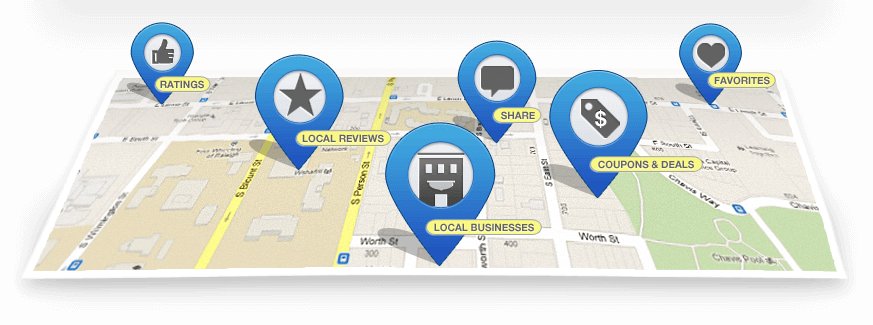Reaching a Deeper Audience
with vertical search
People prefer a customized experience. We no longer have only three TV channels that contain a little bit of everything- We have networks dedicated to cooking, survival skills, crime and any other topic imaginable.
The same goes for search engines. Users are looking for something more tailored to their interests. Something like… VERTICAL SEARCH.
But wait- What Is Vertical Search?
Vertical search is similar to universal search, except that a vertical search engine focuses on a specific category, media type or genre of content.
Google is a universal search engine. It searches horizontally across different topics and media to find the best suited response for the user. When you do a search for “stars” in Google, you’re going to get a huge string of results, ranging from astrology, celebrities in Hollywood, the Dallas Stars hockey team and more.
Why This Is Important for EVERYTHING
The information on the internet is growing at a rapid pace. From 1 small website in 1991 to 4.73 billion pages in 2015, the amount of content out there seems unlimited (because it is). But when it comes to one general search engine, the ability to find all of it is limited.
Think about this: let’s assume you have a client meeting five hours away. It’s too far to drive there and back in one day so your employer suggests you stay in a hotel. Are you going to search in Google to reserve the room? Doubtful. You are most likely going to search on a specialized engine like Kayak or Hotwire because you already know what you’re looking for and where to find it. In order to reserve that hotel room, you’re skipping over Google completely and going directly to the source.
Google already utilizes its own vertical search features like image, video, and local. The top 3-result group listing at the top of SERPs is an excellent example of vertical search.
Even though Google is a general search engine, they know that being able to search within a specific category is just as important for user satisfaction. So when we search for “restaurants near me” Google wants to give me a list a highly reviewed restaurants, not just results of publishers’ compiled lists of top 10 restaurants that might be located 10-20 miles away.
How Does It Affect My SEO?
As is the nature of the beast, there’s an upside and a downside to optimizing for vertical search:
The Bad News :(
To take full advantage of vertical search, you’ll have to submit your website to many specialized search engines. For example, if you sell houses, you’ll want to have an account on Trulia that is decked out with descriptions, beautiful images and contact information. You might also want a Houzz account and some profiles on sites relevant to your housing locations. It’s more work upfront, but the exposure you’ll get will be worth it in the end.
The Good News :)
As vertical search continues to grow in use, there are other options for getting your website in front of people. Niche product websites and vertical search engines provide additional opportunity to get discovered by new people (funny how that works, huh?).
Since Google uses vertical search, that’s a bit of good news for you as well- As long as you continue to optimize your site for Google, you get to take advantage of their specialized search features as as your campaign is optimized.
How To Optimize:
To optimize your website and its content for vertical search, think about what people are searching for on a regular basis and how that ties back into your business.
1. Local Directories
Even if you don’t have a small business, it’s important that people can find you when they search for your company or a branch through Google or a directory. Make sure your business is listed in the following local directories:
- Google My Business
- Bing Places for Business
- Yelp
- MerchantCircle
- Yellow Pages
- CitySearch
- (there’s more)
(Big note: Be sure to update your business info if you relocate or make big changes)
2. Niche Sites
Pay attention to your industry. Are there online news publications, apps, social networks or other kind of sites targeting your industry? I’m sure there are. For example, Foursquare for restaurants, Houzz for housing and interior design, ThomasNet for manufacturers, UnTapped for the beer lovers… the list goes on. Don’t miss out on that party! The members and readers of those pages/apps are looking for everything you offer.
3. Images
This shouldn’t be a surprise: 65% of the population are visual learners. Do you know what that means? You should always optimize your images! All search engines use image information (file name, alt text, location, etc.) to determine which images are best to display to the searcher. They’re especially important for your local listings since 60% of consumers give more consideration to local results that have images.
4. Shopping
If you have an ecommerce site, you absolutely need to optimize for vertical search engines because this is the most competitive market.
About 44% of US online shoppers go to Amazon when looking to buy a product. Otherwise, 34% use search engines like Google and only 21% go directly to a retailer’s website to start their product search. So, on top of optimizing your own product pages, you have two good choices for getting your products on the big guys’ websites:
- Set up an account and get your products listed on Amazon, Google Shopping and Ebay.
- Advertise your products on those sites.
Remember how 65% of people are visual? Keeping that stat in mind, you want to consider advertising via the Google Display Network. It allows you target your audience with text, image or video ads and place the ads on websites that are relevant to your products. If you want to to be sure you are spending optimally on your Adwords campaign, let us take a look so we can help you see if there are any holes or areas that need improvement.


